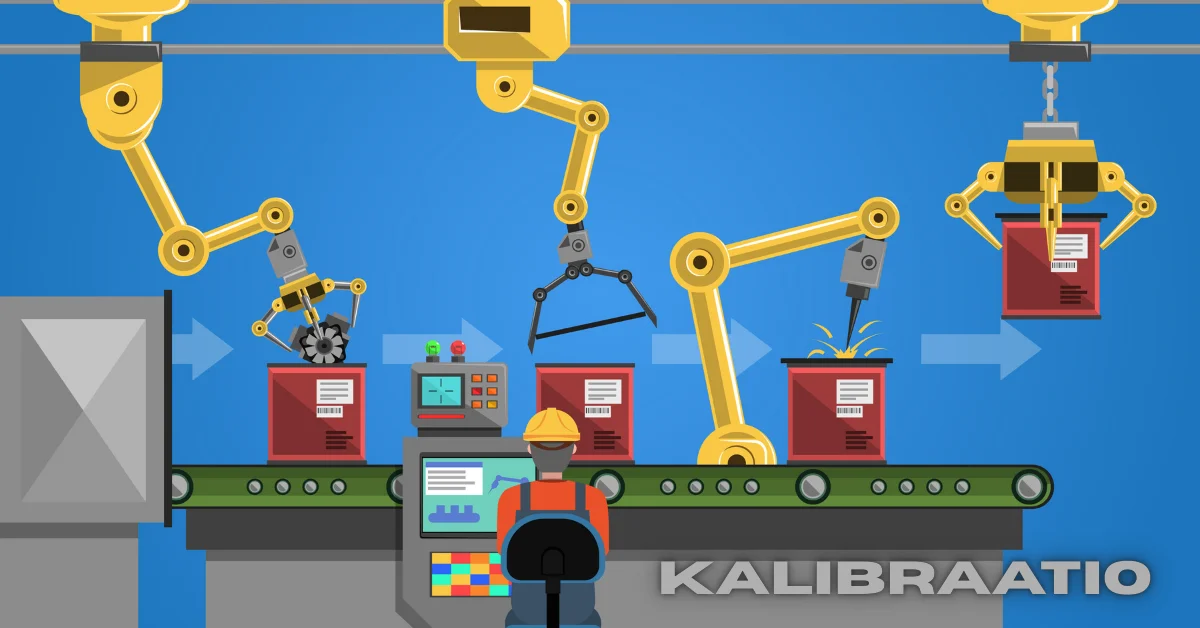🔧 Introduction to Kalibraatio
What is Kalibraatio?
“Kalibraatio” is the Finnish term for calibration, the essential process that ensures your tools and machines perform with unwavering precision. Whether you’re flying a plane, scanning a barcode, or cooking with a digital thermometer, there’s a hidden hero at work: calibration.
Why Calibration is Often Overlooked Yet Crucial
Let’s face it—calibration doesn’t get the spotlight. It’s the backstage crew of the technological show. But without it, accuracy collapses, safety falters, and efficiency takes a nosedive.
🧪 The Science Behind Kalibraatio
How Calibration Works
Calibration is essentially comparing a device’s measurements against a known standard and adjusting accordingly. It’s not guesswork—it’s grounded in meticulous science.
Reference Standards and Measurement Comparisons
Devices are measured against internationally recognized reference standards (like NIST). If discrepancies arise, adjustments are made to align with those standards.
Adjustment vs. Verification
Calibration isn’t always about tweaking. Sometimes, it’s just checking and confirming a device is still accurate—verification rather than adjustment.
Tools That Require Regular Calibration
From micrometers and torque wrenches to medical thermometers and voltmeters, almost every measuring tool needs periodic calibration.
🏭 Importance of Calibration in Everyday Life
Manufacturing and Industrial Use
Automotive Precision
A miscalibrated torque wrench can overtighten a bolt, leading to catastrophic engine failure. In auto assembly lines, calibration saves lives.
Aerospace and Aviation Safety
Jet engines and aircraft components depend on tolerances thinner than a human hair. Calibration ensures everything stays within safe parameters.
Medical Equipment Calibration
Imagine a heart monitor showing wrong readings due to poor calibration. The consequences? Life-threatening. In healthcare, calibration is non-negotiable.
Consumer Electronics and Household Tools
Ever wonder why your bathroom scale fluctuates daily? Lack of calibration. Even your coffee machine’s temperature sensor can lie without it!
🎯 Key Benefits of Kalibraatio
Accuracy and Consistency
The primary benefit? Reliable, repeatable results—every single time.
Equipment Longevity
Properly calibrated equipment undergoes less stress and works efficiently, extending its operational life.
Regulatory Compliance
Many industries require regular calibration to comply with ISO standards, ensuring legal and operational peace of mind.
📏 Types of Calibration
Mechanical Calibration
Covers tools like calipers, pressure gauges, and micrometers—ensuring they give accurate physical readings.
Electrical Calibration
Involves multimeters, oscilloscopes, and signal generators. Crucial for labs, telecom, and tech devices.
Thermodynamic Calibration
Temperature sensors, thermocouples, and thermal cameras fall under this. Vital for both food safety and scientific applications.
Dimensional Calibration
Ensures spatial measurements (like length, width, depth) are precise—think rulers, CMMs, and laser measurers.
⏱️ How Often Should Calibration Be Performed?
Time-Based vs. Use-Based Schedules
Some tools need calibration every 6–12 months. Others depend on usage volume or criticality in operation.
Industry Standards and Recommendations
Organizations like ISO, NIST, and FDA provide specific calibration timelines based on the tool and sector.
🔬 The Calibration Process Explained
Step-by-Step Breakdown
Pre-Calibration Checks
Clean the tool, inspect for damage, and confirm the last calibration date.
Performing the Calibration
Compare the tool’s readings with the reference standard and adjust where necessary.
Documenting Results
Record the “as found” and “as left” data, the reference standard used, and technician credentials.
Role of Calibration Certificates
These are your proof of compliance, often needed during audits or equipment resale.
🛠️ DIY Calibration vs. Professional Services
When You Can Calibrate at Home
Simple tools like kitchen scales or home thermometers can be user-calibrated using household reference items (like ice water for 0°C).
The Risks of Improper Calibration
Calibrating without the right knowledge or standards can make things worse. Always weigh the risk before a DIY attempt.
🚫 Common Calibration Mistakes and How to Avoid Them
Ignoring Manufacturer Guidelines
Each tool is unique. Skipping the manual? That’s flirting with disaster.
Using Inaccurate Reference Standards
Old, worn-out standards will lead you astray. Always use certified and up-to-date references.
📚 Case Studies and Real-World Examples
Failure Due to Lack of Calibration
In 1999, NASA lost the $125 million Mars Climate Orbiter. Why? A mix-up in units and poor calibration practices.
Success Story from Aerospace Industry
Boeing’s preventive calibration systems helped reduce manufacturing defects by 30%—proving calibration isn’t a cost, it’s an asset.
🤖 Future of Kalibraatio
Integration with IoT and Smart Technologies
Devices are getting smarter. Soon, they’ll self-calibrate based on real-time data from the cloud.
AI-Driven Auto-Calibration Systems
Artificial Intelligence can detect calibration drift before humans even notice, automating corrections proactively.
🌱 Environmental and Safety Impact of Calibration
Reducing Waste Through Precision
Overproduction and material waste are cut drastically when machines operate with high precision.
Ensuring Worker Safety
Accurate pressure gauges and thermometers can prevent workplace accidents and fatalities.
🕵️ Myths About Calibration Debunked
“It’s a One-Time Task”
Nope! Like an oil change, calibration is ongoing—not once and done.
“Only Big Industries Need It”
Even home labs and hobbyists benefit from accurate measurements. It’s not about size—it’s about reliability.
💰 Cost of Calibration: Expense or Investment?
Short-Term Cost vs. Long-Term Savings
Spending now saves later—through reduced downtime, fewer errors, and longer-lasting tools.
ROI of Reliable Equipment
Well-calibrated tools don’t break often, and they deliver top-notch results. That’s pure profit.
🎯 Conclusion
So there you have it—kalibraatio isn’t just some technical jargon reserved for engineers in lab coats. It’s the silent guardian of every tool, every machine, and nearly every process we rely on daily. When done right, it empowers industries, protects lives, and saves money. Ignore it, and you’re flying blind.

